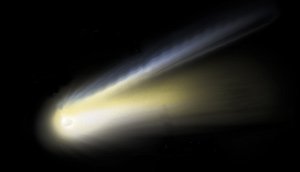 An amateur astronomer in India recently contacted us to let Astronomy magazine know a bit of comet discovery history. Amar A. Sharma, an active visual comet and deep-sky observer from the Bangalore Astronomical Society in India, told us of the first (and only) comet to be discovered by an Indian. Thanks for the great information, Amar!
An amateur astronomer in India recently contacted us to let Astronomy magazine know a bit of comet discovery history. Amar A. Sharma, an active visual comet and deep-sky observer from the Bangalore Astronomical Society in India, told us of the first (and only) comet to be discovered by an Indian. Thanks for the great information, Amar!
Manali Kallat Vainu Bappu (1927–1982) is the father of modern Indian astronomy. He also happens to be the only Indian after whom a comet has been named.
After obtaining his master’s degree in physics from the university of Madras in Tamil Nadu, India, Bappu attended the Harvard Graduate School of Astronomy in Cambridge, Massachusetts, on a scholarship. Within a few months of his arrival at Harvard, on the early morning of July 2, 1949, Bappu was observing for the first time at the George R. Agassiz Station (now known as the Oak Ridge Observatory) and took a 60-minute exposure plate in Cygnus.
Plates such as these are ordinarily sent back to Cambridge for processing, but astronomer Bart Bok suggested that Bappu develop it himself. When he did so the following afternoon, Bappu announced, “Now I’m going to look for comets.” Bok, amused, responded: “Ha, ha, everyone looks for comets.” But upon inspection, Bappu spotted one, and both Gordon A. Newkirk and Bok confirmed the discovery. The comet discovered was 13th magnitude.
From several such plates that Bappu took on successive nights, the astronomers calculated the comet’s orbit to be so large that it would reappear after 60,000 years! The comet was at perihelion (its closest distance to the Sun) October 26, 1949, when it was 2.05 astronomical units from our star (1 AU is the average Earth-Sun distance). Its aphelion distance (its farthest distance from the Sun) is 3,033.60 AU. (You can find the orbit diagram and details at NASA JPL’s Small-Body Database Browser.)
The International Astronomical Union (IAU) officially designated the comet as C/1949 N1 (Bappu-Bok-Newkirk), and it was in IAU Circular #1778.
The ripples of this discovery reached India soon enough, but there were no congratulations offered from the government. The education department of the Indian Embassy in Washington, D.C., sharply reprimanded the young man and asked him to focus on his research instead.
The reprove came in the wake of a cable that the Hyderabad government had sent the embassy instructing them to convey to the student that he was to undertake research according to the terms of his scholarship. “See that your government’s wishes are carried out in every respect,” the letter commanded.
Astronomer Fred Whipple of the Harvard College Observatory wrote a response to the bureaucrat. “This is the first occasion in my experience,” Whipple wrote, “in which a foreign government has taken on itself the criticism of our educational methods in the Astronomy Department of Harvard University.” It would be better for the Hyderabad government, he suggested, to communicate the reasons for its criticism to the Harvard authorities instead of “reprimanding the student in such a way that he finds it difficult to follow our guidance in his advance education.”
Whipple then explained that the nature of the discovery was purely accidental. The student’s failure to note this unusual object on his photographic plates would have been a sin of scientific omission, and his failure to announce the discovery would have been a serious neglect of his duty to the scientific world, he said.
Explaining the importance of background training that is necessary for doctoral studies, Whipple sardonically pointed out that if the government insisted on the student confining his research to a narrow field, then it had erred in sending him to Harvard.
Bappu completed his Ph.D. in 1952 and joined the Palomar Observatory in California as a Carnegie Fellow. There, along with American astronomer Colin Wilson, he discovered a relationship between the luminosity of particular kinds of stars and some of their spectral characteristics. This important observation was published in a paper in 1957, and came to be known as the Bappu-Wilson effect. It is used to determine the luminosity and distance of these kinds of stars.
In 1949, the Astronomical Society of the Pacific awarded Bappu the Donahue Comet Medal. He was elected as Honorary Foreign Fellow of the Belgium Academy of Sciences and was an honorary member of the American Astronomical Society. He was even elected president of the International Astronomical Union in 1979, and served from 1979 to 1982.
His name is etched in the field of astronomy through other contributions, too. He founded an optical observatory in South India at Kavalur, which still houses Asia's largest parabolic mirror of 2.3-meter diameter, along with other telescopes.
Thanks again to Amar Sharma for sharing this story with the magazine. It’s always exciting to hear about the history of astronomy.